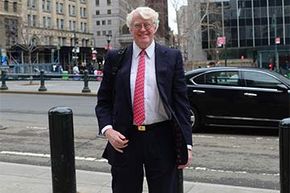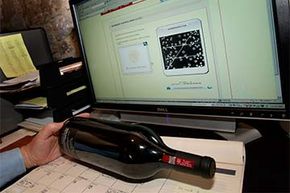It's hard to feel sorry for Bill Koch. The billionaire brother of conservative political donors Charles and David Koch sold his share in the family energy business years ago and dedicated his enviable nest egg — how big of a nest do you need for $4 billion — to the aristocratic hobby of collecting rare and absurdly expensive things [source: Forbes]. His less-than-modest Florida home features original works of art by Picasso and Monet and a wine cellar containing some of the most expensive and scarce vintages in the world. It also contains several hundred bottles of "moose piss" [source: Stephens].
That's how Koch described the dubious contents of 421 bottles of counterfeit wine that he unwittingly purchased for $4.5 million over the past 25 years. The phony bottles of Chateau Lafite-Rothschild from 1961 and handblown relics reportedly owned by Thomas Jefferson were forged by enterprising wine dealers-turned-fraudsters who "aged" fake labels with coffee grounds, tampered with corks and passed off grocery-store hooch for the finest of fine wines.
Advertisement
One of those high-society swindlers, Rudy Kurniawan, was sentenced in 2014 to 10 years in prison and over $48 million in damages for running a wine-forging factory out of his Los Angeles apartment, corking up custom blends of inexpensive wine in reclaimed bottles and selling them for hundreds of thousands of dollars a pop to über-rich saps like Koch [source: Gardiner and Sharp].
You could argue that wine fraud is a victimless crime, since the people who "suffer" still have billions to spare. Kurniawan's defense lawyers used that very argument in a vain attempt to reduce the forger's sentence. "Nobody died. Nobody lost their savings. Nobody lost their job," they pleaded. Who cares if a handful of one-percenters get ripped off trying to impress their friends?
Wine drinkers, for one. All told, wine fraud is estimated to have cost $650 billion worldwide in counterfeiting, piracy, patent infringement and copyright theft [source: Gannon]. Those costs are built into your next bottle of cabernet sauvignon. And when wine prices are artificially high on the top end — as they were when Kurniawan sold $35 million in fake booze in 2006 — it raises prices on the low end, [source: Steinberger].
Keep reading to hear how private investigators solved the mystery of the infamous "Jefferson Bottles" and learn about the high-tech precautions wineries are taking to protect their priceless beverages from enterprising con artists.
Advertisement


